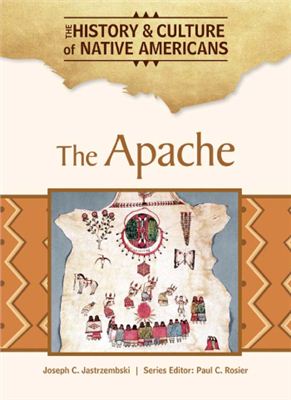Chelsea House, 2011. - 129 pages.
First entering the present-day American Southwest around 1500, the Apaches established themselves in the face of competition from the Spanish, Mexicans, and Americans. After decades of fierce resistance, the Apache tribes eventually found themselves facing an assault on their culture as they were confined to reservations and their children sent to boarding schools. Nevertheless the people found new ways to preserve their culture and sense of nationhood even as they leaed to navigate the changing social, political, and economic landscape of mode America. Today, most Apache still live in the states of Arizona, New Mexico, and Oklahoma, where the principal Apache reservations are located. In The Apache, read how this proud people thrived in America, interacted with Europeans, and live today.
First entering the present-day American Southwest around 1500, the Apaches established themselves in the face of competition from the Spanish, Mexicans, and Americans. After decades of fierce resistance, the Apache tribes eventually found themselves facing an assault on their culture as they were confined to reservations and their children sent to boarding schools. Nevertheless the people found new ways to preserve their culture and sense of nationhood even as they leaed to navigate the changing social, political, and economic landscape of mode America. Today, most Apache still live in the states of Arizona, New Mexico, and Oklahoma, where the principal Apache reservations are located. In The Apache, read how this proud people thrived in America, interacted with Europeans, and live today.

